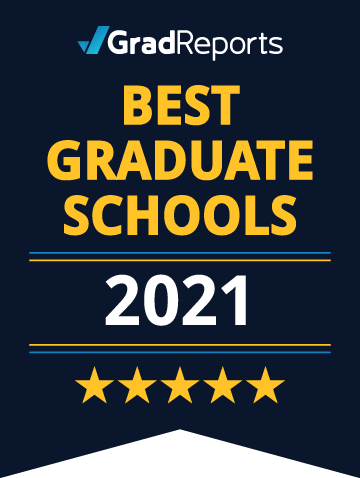2021 Best Graduate Schools for a Master's Degree by Salary Score™
Graduate school is a significant financial investment, and one of the top factors students consider when choosing a program is how a master’s degree will impact their salary. We believe salary is a critical measure of student success, which is why we evaluate schools based on alumni salaries in the year after graduation. We rank colleges and universities by our proprietary Salary Score, which reflects how much alumni earn compared to alumni of the same programs at other colleges. This list highlights schools that prepare students for high-paying careers regardless of what they study. Each college and university on this list offers and includes data for at least eight master’s-level programs. Read our methodology to learn more about how schools were ranked. Also, read our reviews from graduate students for another perspective.
While other ranking lists highlight colleges with elite reputations, our list serves a different purpose by directing students to schools whose alumni earn higher salaries in the first year after graduation. Overall, we found that nonprofit institutions produced master’s-level graduates who earn higher salaries — the top 25 schools for earning potential were all nonprofit colleges and universities. Our data also highlights many strong public universities. It is a common belief that attending private institutions results in higher salaries for graduates, and they often dominate other ranking lists. While many of the top universities on our list are private, 43% of the top 25 institutions for earning potential were public universities.
Just three of the eight Ivy League colleges were included in our top 25 list. This finding is particularly interesting because it indicates that having a graduate-level credential from a prestigious university does not guarantee the salary boost that students may expect from elite institutions.
Tuition, median salaries, and median debt were reported by the U.S. Department of Education in November 2019. View our methodology for more details about these rankings or read more about the top-ranked schools.
KEY INSIGHTS:
- 43 of the top 100 colleges with master’s degrees are public, a stark contrast from the bachelor’s degree rankings, which were overwhelmingly private universities
- Only three of the eight Ivy League colleges are included in the top 25 schools
- For-profit colleges have a significantly lower median Salary Score than private nonprofit colleges (24.21 points lower)
What are the top five states for a master’s degree?
Overall, states that had the highest-paid alumni were all areas with a higher cost of living. Nonetheless, there are some interesting takeaways from the data.
Top Five States by Master’s Degree Salaries
| State | Cost of Living Index* | Median Salary Score™ |
|---|---|---|
| Washington | 111.3 | 81.54 |
| California | 138.5 | 81.42 |
| Alaska | 128.0 | 79.84 |
| Washington D.C. | 161.1 | 79.07 |
| Massachusetts | 132.6 | 70.04 |
Cost of Living by State Source: Missouri Economic Research and Information Center
Washington state came in first: it had the highest median Salary Score and is the 14th most expensive state to live in. This indicates that Washington graduates still earn more than alumni from other states when living costs are factored in.
California comes in second with a median Salary Score of 81.42, which is likely due in part to the high cost of living in the state. California is the third-most-expensive state to live in behind Hawaii and the District of Columbia.
Alaska came in third with a median Salary Score of 79.84. As the eighth-most-expensive state in the country, this can again be attributed in part to a high cost of living. However, Alaska also only has one university that met our criteria, which may skew the data.
The District of Columbia came in fourth on the list with a median Salary Score of 79.07. Because the area is one of the most expensive places to live in the United States, the high earnings are again in line with a high cost of living.
Finally, Massachusetts scored fifth on the list with a median Salary Score of 70.04. It’s the sixth most expensive state to live in.
States with a lower median Salary Score are generally in the South, where the cost of living is often lower and likely contributes to lower salary rates.
What are the best public colleges for master’s degrees based on Salary Score™?
The highest-scoring public institutions at the master’s level were located mainly in California, which generally has high salaries due to the high cost of living.
Top Five Public Colleges for Master’s Degree Salaries
| Public College Rank | Overall Rank | School Name | Salary Score™ |
|---|---|---|---|
| 1 | 3 | 96.22 | |
| 2 | 7 | 94.07 | |
| 3 | 11 | 93.38 | |
| 4 | 15 | 92.10 | |
| 5 | 16 | 92.03 |
The University of California-Berkeley was the top-ranked public university based on graduate-level alumni earnings, with a Salary Score of 96.22. Located in Berkeley, California, the university is known for the high level of research its students conduct and it offers more than 100 graduate programs across 14 schools and colleges. UC-Berkeley also ranked second for public schools at the bachelor’s level, indicating that its graduates earn higher salaries across degree levels.
Hunter College of the City University of New York (CUNY) came in second with a Salary Score of 94.07. The New York City-based campus serves 6,500 graduate students through programs in arts and humanities, natural and social sciences, social work, education, health professions, and urban public health. The school was ranked seventh overall for median master’s alumni salaries.
The University of California-Los Angeles (UCLA) ranked third for public schools at the master’s level, with a Salary Score of 93.38. UCLA offers nearly 150 graduate programs and serves nearly 13,000 graduate students. Its most popular master’s degrees include MBA programs, nursing, education, computer science, public health, electrical and computer engineering, film and TV, and law.
The fourth best public school at the master’s level was California State University-Dominguez Hills, with a Salary Score of 92.1. The university offers graduate programs designed for working adults, with classes primarily offered online or at night. Located in Los Angeles, the university serves around 2,000 graduate students through master’s programs in business, computer science, counseling, education, English, health sciences, humanities, biology, social work, occupational therapy, public administration, and other fields.
Finally, California State University-East Bay ranked fifth with a Salary Score of 92.03. CSU-East Bay also ranked fifth for public schools at the bachelor’s level, which shows that graduates across degree levels consistently earn higher salaries. The university has campuses in Hayward and Concord and also serves graduate students through its online programs. Popular master’s-level programs at CSU-East Bay include education, business administration, healthcare administration, computer science, social work, business analytics, statistics, public administration, speech-language pathology, and counseling. The university has 1,339 graduate students and is known for its diverse student population.
How does Salary Score™ stack up in terms of public, private, and for-profit schools?
Overall, private nonprofit institutions had the highest median alumni salaries, with a median Salary Score of 58.2. Public nonprofit institutions followed with a median Salary Score of 46.45. For-profit private institutions fared significantly worse at the master’s level with a median Salary Score of 33.99, a full 24.21 points lower than that of private nonprofit colleges and universities. This finding is not entirely surprising given that for-profit schools are consistently associated with poor student outcomes, including higher rates of loan defaults. While some for-profit schools have better student outcomes than others, the data suggest that for-profit schools at the master’s level may be especially detrimental to students financially.
| Profit Status | Public/Private | Median Salary Score™ |
|---|---|---|
| Nonprofit | Private | 58.20 |
| Nonprofit | Public | 46.45 |
| For-Profit | Private | 33.99 |
Best Master's Programs by Subject
2021 Best Master's Degrees Highlights

In Cambridge, across the Charles River from Boston, sits the Massachusetts Institute of Technology (MIT). Incorporated in 1861, MIT is a medium-sized private university known for research. Approximately 7,000 graduate students are currently enrolled in programs available through each of MIT's five schools: architecture and planning; engineering; humanities, arts, and social sciences; management; and science. Most of the 31 Master of Arts and Master of Science programs are designed to be completed in one to two years, although the graduate degrees in engineering may require two years or more.
The individual academic departments within MIT provide most of the financial support for MIT graduate students, but funding resources vary significantly among disciplines. On-campus students may be eligible for funding in the form of research assistantships, teaching assistantships, and other on-campus jobs, and all graduate students may be eligible for scholarships and grants. In 2019, nearly half of all graduate students were employed as research and teaching assistants, and 36% of first-year graduate students were supported by fellowships. Graduate students also have access to career planning and professional development resources.
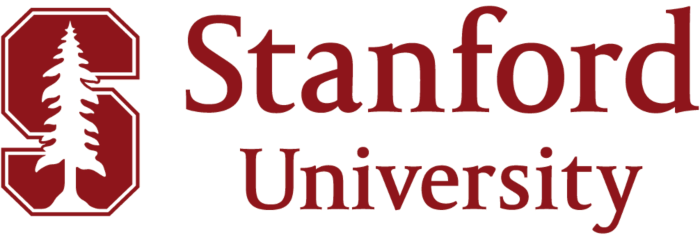
Stanford University is located on 8,180 acres in California’s Silicon Valley, between the Santa Cruz Mountains and San Francisco Bay. The suburban campus houses the Stanford schools of engineering, humanities and sciences, law, medicine, environmental sciences, business, and education. Founded in 1885, the large private research university enrolls more than 9,000 graduate students and maintains a student-to-faculty ratio of 5:1. Stanford is among the leading private universities that award the highest number of PhDs each year and offers nearly 200 graduate programs and 14 post-baccalaureate degrees, including Master of Science, Master of Arts, Master of Business Administration, Juris Doctor, Doctor of Medicine, and Doctor of Philosophy degrees.
More than three-quarters of graduate students receive funding through Stanford or other sources. Fellowships, research and teaching assistantships, and other aid are offered through the individual schools and departments. Some schools, such as the Graduate School of Education and the Graduate School of Business, provide need-based grants and full-tuition fellowships for students. The university also fully funds any graduate program for 100 students per year through the Knight-Hennessy Scholars program. Through the alumni career services portal, Stanford graduates can network with other alumni, meet with a career coach, and access a university-specific job board.
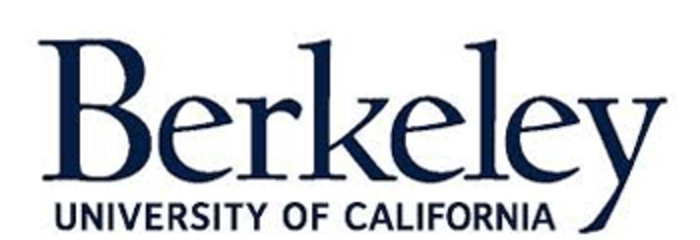
Founded in 1868, the University of California (UC) - Berkeley is the University of California system’s original campus. Today, the large public research university, located in Berkeley, California, serves 11,500 graduate students through more than 100 graduate programs. Students can pursue Master of Science, Master of Arts, Master of Business Association, and other advanced degrees in UC Berkeley’s schools of chemistry, education, engineering, environmental design, business, information, journalism, law, science, natural resources, optometry, public health, public policy, and social welfare.
UC Berkeley offers a wide range of fellowships and financial awards, and 90% of all graduate students receive some form of financial support. Students may qualify for research funding in a variety of fields, or financial awards for foreign language studies, volunteer work, or academic achievement. The university also provides funding for students who are parents or live-in caregivers. Graduate students can access professional development resources through GradPro, a program that offers career exploration and preparation services, workshops and seminars, and individual career counseling.
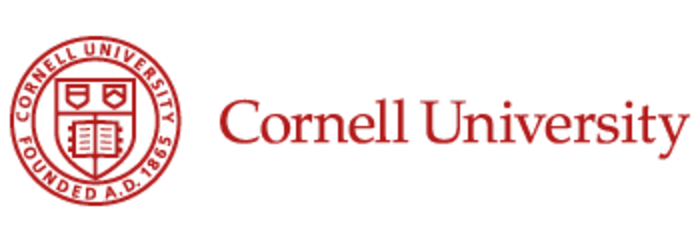
New York state’s land-grant institution, Cornell University, is located in the Finger Lakes region of Ithaca, New York. The large private research university serves 6,200 graduate students and offers the broadest range of programs in the Ivy League. Graduate students can pursue research and professional degrees, including Master of Arts, Master of Science, Master of Fine Arts, and Master of Business Administration degrees, in nearly 100 fields of study. The university is also home to the highly-regarded Cornell School of Hotel Administration.
Master’s students may qualify for university-funded assistantships and fellowships, which are awarded through each field of study. The university also offers a student-parent grant to students who have dependent children. Graduate students have access to career services unique to each school, as well as general career resources. Many Cornell graduate students go on to work in education, and the university also offers specific resources for those seeking a role in academia. Through Cornell's CUeLINKS network, students can connect with peers, faculty, staff, and Cornell alumni during and after their studies.

Saint Mary’s College of California (SMC) is a Catholic liberal arts college Located 23 miles east of San Francisco in the town of Moraga, California. The small private school was established in 1863. Today, SMC is one of the oldest colleges in the West and serves a highly diverse student population with a student-to faculty-ratio of 10:1. Just over 1,000 graduate students are enrolled in the School of Economics and Business Administration, Kalmanovitz School of Education, and the School of Liberal Arts. The college offers 26 different graduate degree programs, including Master of Arts, Master of Fine Arts, Master of Business Administration, and Master of Science degrees. SMC follows a unique academic schedule that includes two four-month terms and one month-long January term. Many students take the opportunity to study abroad during this term as part of an instructor-led course.
Around 75% of students receive financial aid, and SMC offers scholarships for graduate students studying creative writing, kinesiology, education, and business. Students and alumni also have access to a range of career services, including workshops, career counseling, graduate and professional school advising, and an SMC LinkedIn group to help alumni connect.
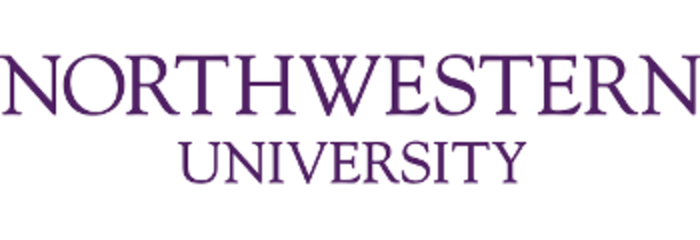
Founded in 1851, Northwestern University is a large private institution with two campuses located in Evanston, Illinois, and downtown Chicago. The university has a student to faculty ratio of 6:1. Northwestern offers over 70 master's degree programs in business, law, medicine, music, communication, engineering, education, social policy, and the arts and sciences. Northwestern's faculty has received many distinguished awards, including the Nobel Prize, Pulitzer Prize, and Guggenheim Fellowships, among others.
Northwestern University offers scholarships to master's students through their 10 graduate colleges and schools. The School of Education and Policy offers Master of Science Education Fellowships valued up to $55,000 in 2019-2020, and the Kellogg School of Management offers MBA students need- and merit-based scholarships. Northwestern also provides tuition payment plans to all qualifying students. Career and development services vary among the colleges; for example, the Kellogg Career Management Center provides master's degree students with a career plan, connects them with employers and an extensive alumni network, and offers job search strategies. For the class of 2020, 95% of Kellogg school graduates received a job offer three months after graduation.
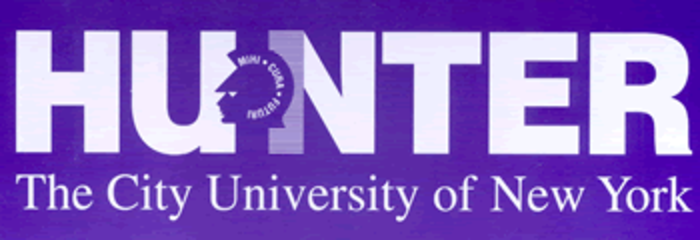
Part of the City University of New York (CUNY) system, CUNY Hunter College is a medium-sized public university located in the Upper East Side of Manhattan that was founded in 1870. The student to faculty ratio is 13:1. Hunter College offers master’s degree programs in the arts and sciences, education, health, nursing, social work, and urban public health. The Hunter School of Education is nationally recognized for preparing teachers and counselors to be leaders in urban education.
Seventy-five percent of CUNY Hunter College students graduate with no debt. The college and the greater CUNY system offer graduate students institutional scholarships and aid based on merit, need, enrollment, and course of study. Hunter College also offers tuition payment plans and tuition fee waivers for qualifying students. Students can take advantage of various career development services, including career counseling, resume writing, interview preparation, and recruitment events. Hunter College's graduate school programs also offer students targeted alumni services and career support for their intended field.
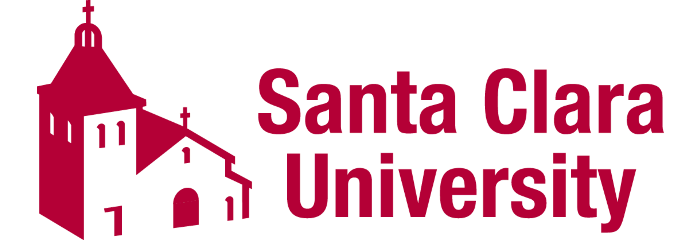
Santa Clara University (SCU) was established in 1851 and is a medium-sized private institution located in Silicon Valley in California. SCU has a student to faculty ratio of 10:1. The school incorporates aspects of Jesuit Catholic values and traditions into their classrooms and programs. SCU offers a number of part-time and full-time master's degrees in business, engineering, education, counseling psychology, law, pastoral ministries, and Jesuit theology.
SCU offers graduate students tuition payment plans and various institutional scholarships, grants, and fellowships. Career support and resources vary by the graduate program. Santa Clara’s Lewey School of Business offers career management services that provide students with career counseling services, resume review, workshops, a graduate business network, and opportunities to engage with employers. SCU notes that 98% of business school graduates are employed within six months of graduation. The Center for Professional Development is offered through the School of Counseling Psychology and provides continuing education opportunities and career support for students and alumni who are currently working as therapists or educators.
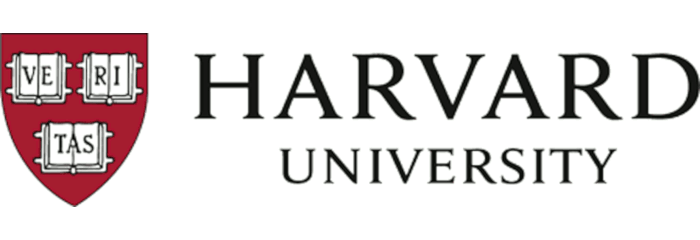
Established in 1656, Harvard University is a large private institution located in Cambridge, Massachusetts, a suburb of Boston. The student to faculty ratio is 7:1. Harvard has 12 graduate and professional schools in business, law, education, governmental policy, medicine, engineering, design, public health, and more. The highly regarded Harvard Business School (HBS) offers an on-campus, two-year MBA degree program and several graduate certificates.
Harvard’s graduate programs offer tuition assistance in the form of scholarships and fellowships. Fifty percent of HBS students receive need-based scholarship awards that are typically in the $30,000-70,000 range. HBS also offers several fellowships that provide graduating MBA students with funding and/or employment opportunities, including the Leadership Fellows and Global Opportunity Fellowships programs. Students enrolled in Harvard's Institute for Applied Computational Science (IACS) master's programs can apply for an IACS scholarship to fund their research. Various career support services are offered to students throughout their schooling and beyond graduation. HBS students receive personalized career coaches, focused career search support, and lifelong access to alumni events and career coaching programs. The Office of Career Services offered through the Graduate School of Arts and Sciences also provides students with career counseling, exploration, and guidance.
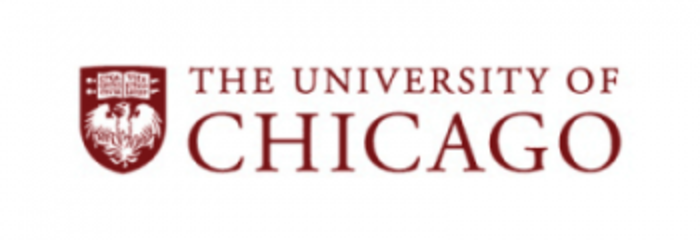
The University of Chicago (UC) was founded in 1890 and is a large private institution located in the residential neighborhood of Hyde Park. UC has a student to faculty ratio of 5:1. The university offers over 100 graduate programs in science, business, public policy, engineering, medicine, social services, law, humanities, and the liberal arts. UC is recognized for the Pritzker School of Medicine and the Pritzker School of Molecular Engineering, which is the first school in the nation dedicated to this field.
Funding for graduate students varies across programs, with some offering merit- and need-based scholarships. Students should check their specific programs to see what aid is available. UC also offers aid in the form of research or teaching assistantships, fellowships, or grants. UChicagoGrad is a dedicated resource for graduate students that offers a range of personalized academic advising and career preparation services, including an internship program that places graduate students in over 75 paid internships every year.
